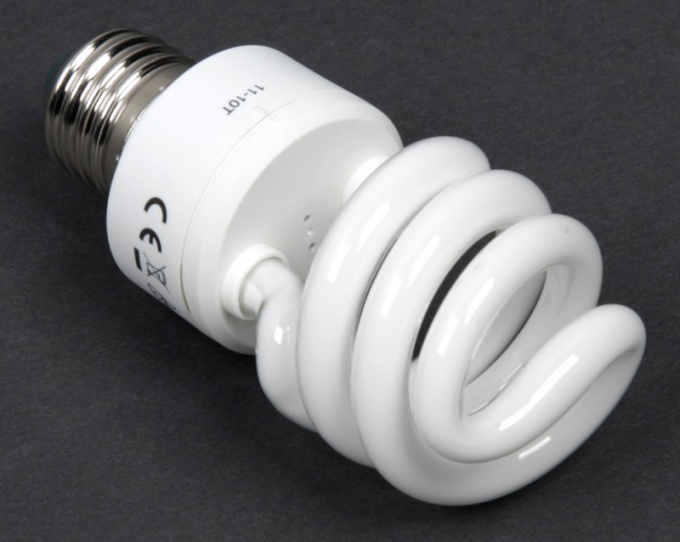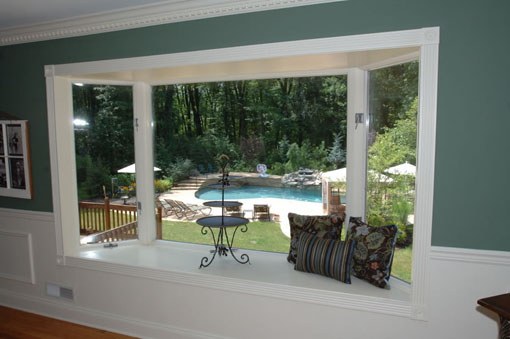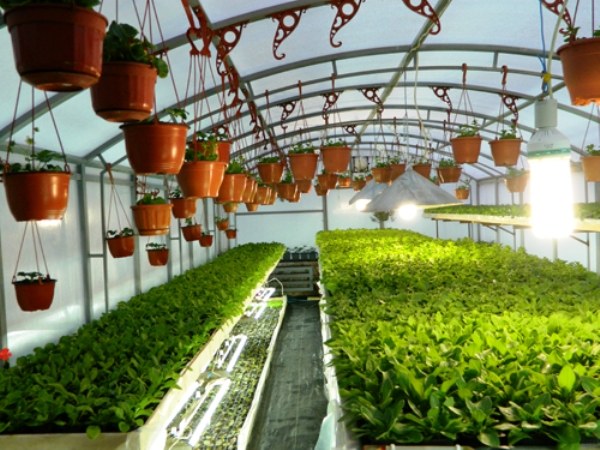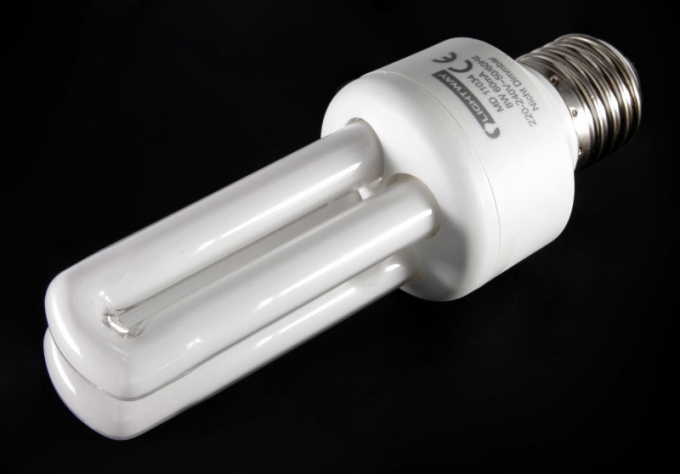Energy-saving lamps: pros and cons
Energy-saving lamps: pros and cons
Energy-saving lamps currently have both their supporters and opponents. To understand how useful they are, it is necessary to isolate and analyze all their advantages and disadvantages.

Energy-saving lamps are an analogdistributed in the offices of "daylight tubes". In fact, these are the same tubes, folded into a snake or a spiral, and filled with mercury vapor. The walls of the tube are coated with a phosphor. Under the influence of an electric discharge, mercury vapor emits ultraviolet rays, which causes the phosphor, deposited on the walls, to emit light. The lamp base contains electronic ballasts (electronic control gear), which is responsible for starting the luminaire (electronic ballasts in office lamps are usually mounted in the plafond itself).
Pros of energy-saving lamps
Energy-saving lamps differ longthe service life is 10-12 thousand hours. Given that the lamps are manufactured different in quality, as an average, you can take 7000 hours. Conventional lamps serve no more than 1000 hours, so energy-saving leaders are in any case suitable for home use. Another positive feature of energy-saving lamps is low power consumption. Such lamps consume electricity 5 times less, although their power at the same time corresponds to that which is typical for the "lamp Ilyich". In addition, energy-saving lamps usually shine brighter and better illuminate the room. The fluorescent lamps are covered by the factory warranty, while for ordinary lamps there is no guarantee. The design of the saving lamps is designed in such a way that there is no stroboscopic effect when lighting, and the light flux remains stable even under voltage pulsations. Thanks to this, the eyes get tired much less with light. Use energy-saving lamps can be even in those rooms where there are temperature limits, because these lamps almost do not heat up.Cons of energy-saving lamps
Fluorescent lamps are more expensive than usual: the price for one lamp is 50-100 rubles for copies of Russian and Chinese production and up to 200 rubles - for high-quality imported. Quite qualitative and competitive are Russian products, their price is the most adequate. The tube contains mercury vapor, so it is strongly recommended not to break such a lamp. If this happens, you need to immediately ventilate the room. The base part of the energy-saving lamp is slightly larger than the traditional one, so it does not fit all chandeliers. Lighting energy-saving lamp looks unusual and may not like everyone. The light from a normal lamp seems a little yellow, while the energy-saving lamp emits a nearly white light that does not seem comfortable to every eye.Operation of energy-saving lamps
Avoid negative consequences when handlingenergy-saving lamps can, if you comply with the necessary requirements and recommendations. First of all, you need to handle the fragile bulb as carefully as possible. If you perform various manipulations, for example, transportation, installation, removal, etc., keep the energy saving light bulb behind the plastic case. This is especially true for models with thin tubes. Carefully work with shades that have a narrow neck, as there may be problems with screwing the bulb.Remember that energy-saving lamps can not standfrequent inclusions. Lamps up to 13 W can not be turned off at all. They can work all day, as a result of the reduction in the resource due to unnecessary inclusions will be more expensive.If you plan to turn on the light in a placemore often 3-4 times a day, it is better to use energy-saving lamps with a smooth start function. This is not always convenient, but it extends the service life well. The presence of a function is not always easy to learn, so you need to ask the seller about this before purchasing.
Despite the fact that the instant start function is often indicated as a virtue, it is still worthwhile to avoid buying cheap energy-saving lamps, especially Chinese ones.Try to control the running timeenergy saving lamps. You can record the commissioning date, for example, directly on the plastic case with a simple pencil. By these records in the future you will be able to determine the most reliable manufacturers. Vendors often provide a six-year guarantee that is minimal legal, but low-quality lamps are unlikely to survive this period, so keep checks and packaging. You need to carefully choose lampshades and plafonds, because they are able to "steal" up to 60% of the world. Usually, the plafonds are used to soften the sharp light of incandescent lamps, and the luminescent ones create soft lighting by themselves. To use the light flux as much as possible, try using a mirror tape. Cover them with plafonds at the lamps from the inside, the wall behind the lamp, etc.







